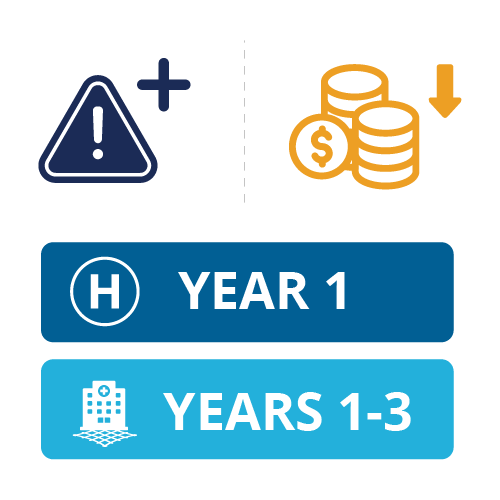Across late August 2024, the Centers for Medicare & Medicaid Services (CMS) recently finalized the Transforming Episode Accountability Model (TEAM) in the Hospital Inpatient Prospective Payment System Final Rule. This is CMS’ latest attempt to transition all traditional Medicare beneficiaries into an accountable care relationship by 2030. Specialty care strategies are an important piece of accomplishing that goal and TEAM builds on the past successes of Bundled Payments for Care Improvement Advanced (BPCI-A) and Comprehensive Joint Replacement (CJR) models.
TEAM is a mandatory model beginning January 1, 2026 and running for five years, requiring the participation of hospitals in 188 Core Based Statistical Areas (CBSAs). At a high level, participating hospitals are paid a set amount, or target price, for five episodes of care. While the model centers on specialty care episodes, hospitals are required to refer patients to primary care providers, promoting overall value-based care efforts. This target price for each episode is expected to cover the patient’s total cost of care for thirty days after a trigger event.
While it is possible CMS will expand the covered episodes list, the five initial episodes of care covered include coronary artery bypass grafts, lower extremity joint replacements, surgical hip femur fracture treatment, spinal fusions, and major bowel procedures.
Within the model, there are three risk tracks:
Track 1

Offers upside risk only with lower levels of reward. This track is available to all participants in the first model year only. Safety net hospitals can remain in this track for three years.
Track 2

Also offers lower levels of risk and reward. It is available to safety net and rural hospitals in years 2-5.
Track 3

Offers higher levels of risk and reward for participants in years 1-5.
As with all value-based care models, it is important to have actionable, granular, and episodic data as early as possible to understand anticipated performance and levers to improve. Hospitals need their own performance data and their performance relative to peers to breakdown and shift their performance.
Fill out the form for a step-by-step case study of putting data into action to understand performance implications in the TEAM model.
